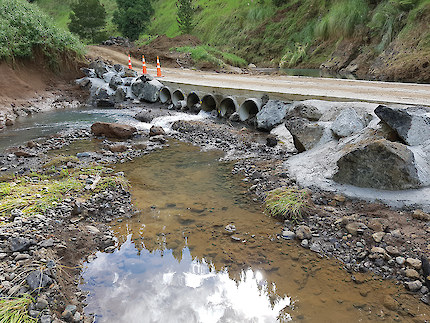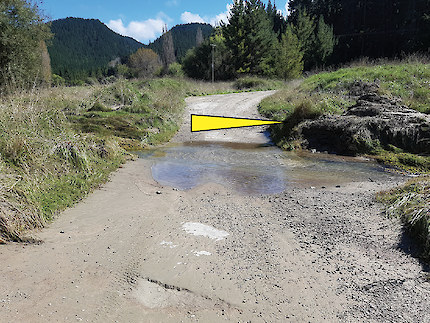River crossings need regular R&M, especially after storms. R&M is often to clear debris and fix scouring of inlets, outlets and abutments.

- Gravel removed from blocked culverts
- The damage was fixed by rock and concrete re-enforcement
- Road approaches fixed

- Do not put storm deposited silt removed from the crossing on the bank
- Truck spoil away from the immediate area

- Remove debris before it becomes a significant problem
- Once debris blocks the culvert, the water needs to go somewhere else
- Since the culvert is located at the lowest point, water will go over the top
- This will scour out the culvert
- This is a common and challenging problem to fix, especially in rivers with lots of woody debris